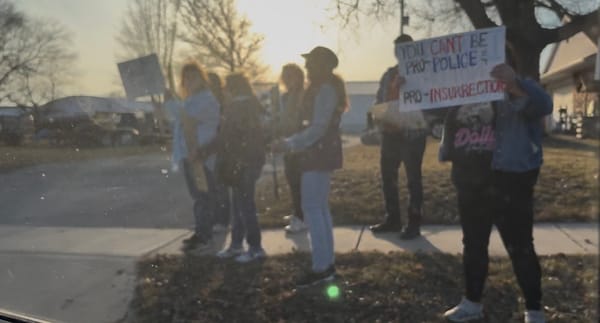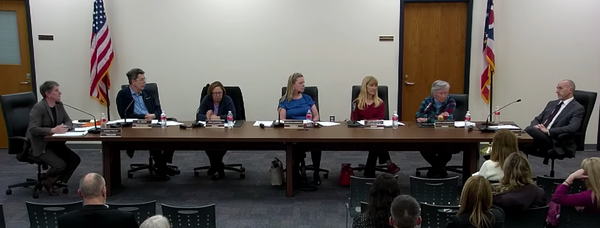Issue One Prepares to Rock Ohio Voters
By Jeff Skinner
STATEWIDE – While many Ohioans are looking towards the November election as the first volley of a new political battle, the frontlines are actually being mobilized this August with Issue One.
As many within political circles are aware, after the Supreme Court overturned Roe v. Wade, special interest groups began focusing their efforts on amending state constitutions, where able, to force the issue into enshrined state constitutions and Ohio was no different. Possibly foreseeing the ease at which the state constitution in Ohio could be amended with a simple majority, representative Derrick Merrin attempted to push the contents of what would become Issue 1 through the house in January. Sources close to the issue indicate that efforts were thwarted by Jason Stevens, who was the house speaker at the time. According to these sources, despite facing considerable pushback from Stevens, Merrin was able to fill several vacancies within the republican caucus with likeminded people and force the issue onto the floor which then forced Stevens’ hand to vote to place the issue on the ballot for August. Failing to support the endeavor would have been disastrous for Stevens’ quasi republican base.
The issue currently has Ohioans divided but also somewhat confused. Ads currently flood television stations, radio and social media telling people Issue 1 would destroy principles such as “One person, one vote” and often show scissors shredding the constitution. While neither of these are true, the facts are that Issue 1 would make it more difficult to pass amendments to the constitution and, according to Chairman of Central and Executive Committee Nancy McArthur, some of the urgency to place the issue on August’s special election comes from the largely out-of-state push to add abortion to the constitution in Ohio.
“Often times things don’t move unless there is some urgency and because of some urgency now that’s why we are looking at this for the August election,” McArthur said. “Some wanted it to go on the May Ballot but there was a speaker fight down in Columbus, but the timing of it, there is no question in it there is some timing issues with the abortion issue coming in November.”
As it stands, a large amount of funding has gone into collecting signatures to place abortion as a constitutionally protected amendment on the ballot in November. According to polling from Baldwin Wallace University, around 59.1% of Ohioans support abortion rights. Currently, the Ohio constitution only requires a 50%+1 vote to add an amendment to the constitution, making Novembers abortion vote a high probability within the state. Some have argued Issue 1 is a reactionary push that would seek to raise the bar to make the leap slightly more difficult. Should Issue 1 pass, it would raise the voting threshold to 60 percent needed to pass an amendment and also require that future amendments need more than the current five percent of 44 counties worth of signatures required to get on a ballot. Under the new bill, all 88 counties would be needed to show support for a new amendment. According to McArthur, this higher threshold is not unheard of within other states either.
“We are one of a few states that actually allow amendments at all,” McArthur said. “I keep hearing this figure stated ‘111 years we have had this,’ prior to that we didn’t even allow amendments at all. Things can change over time, this is solely about raising the threshold to that 60 percent and certainly other states have that, Illinois, Florida and even states that are bluer have higher thresholds.”
Still, some question whether this hurdle will put up an effective bulwark against out of state special interest groups seeking to influence the Midwest. The Vote No coalition has far out raised the Vote Yes crowd, generating $14.8 million and an additional $1.8 million in services from the ACLU. Within that $2.6 million was raised from the Sixteen Thirty Fund, a progressive dark money group, and $1.875 million came from the Tides Foundation, a social justice organization based in San Francisco. Nearly two-thirds of the contributions came from groups housed in Washington D.C., California, New York and Canada.
With so many out of state, and even country, funders coming together, the question could be asked whether the attempted bulwark will impede their march across the Midwest or merely slow it down. In addition to this is the consideration for many ‘conservative’ grassroots initiatives currently working towards their goals, such as the Medical Right to Refuse amendment. Workers with this initiative have been struggling with their decisions in August and for what it could mean for Ohio’s future ability to form grassroots initiatives.
“The problem is we have no money backing it,” Diana Smith of the Medical Right to Refuse movement said. “We are all volunteer so it’s people’s own time to go to events, whereas abortion amendment, they had over 700,000 signatures in 90 days. They have millions backing it and they hired out of state people, which pursuant to Ohio Revised code is supposed to be illegal. I’m concerned it could make it harder for true Ohio citizens amendment initiatives and it will hinder grassroots initiatives. The old adage cut your nose to spite your face comes to mind.”
According to Smith, workers within the medical freedom initiative have attempted to go to workers for the abortion amendment offering to ‘sign theirs if they sign ours’ and found the workers were unable to due to being residents of neighboring states like Michigan. While a formal complaint has been filed by the Medical Right to Refuse regarding these practices from out-of-state funders and workers, it begs the question about whether such a push will be effective at hindering them and about whether Issue 1 could cause damage to grassroots movements. According to McArthur though, the Issue 1 vote will not mean an end to grassroots initiatives, but hopefully a significant roadblock for those entities which seek to subvert Ohioans.
“If issue 1 passes, it doesn’t mean these issues can’t still come before the voters and they will,” McArthur said. “It’s just going to make it a little more expensive and a little more difficult for some of these big outside interests for the most part. [Grassroots movements] don’t have to put it into the constitution, they could do an initiated statute and work with their legislatures to get some law passed which is what most people do.”
Ohioans will make their voice heard on the matter on August 8.




